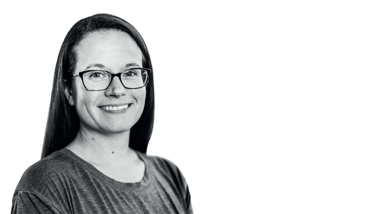The Early Bird Gets the…
All decisions have a ripple effect throughout your cell sourcing supply chain; you must adopt a commercial mentality right from the start
Joy Aho | | Opinion

When it comes to your supply chain for cell sourcing, you must embrace a commercial mindset whatever phase of development your cell or gene therapy is in. And that means starting with the end goal in mind and working in reverse. Why is this important? With the anticipated trajectory of cell and gene therapy development and approvals, you need a resilient cell sourcing infrastructure from the start, including suppliers that can meet your long-term demand.
What does this mean in practice? Let’s look at each step of the supply chain in reverse starting with the patients who will receive the therapy. First of all, you need to think about your indication. The supply chain for a cell therapy treating a rare disease has far different needs than one that will be delivered to thousands of patients a year. Equally important is where the patients will be treated. Here, I’m specifically referring to the country where the therapy will be delivered. Different countries have different regulatory requirements for starting material collection and manufacturing. If you expect your therapy to have international distribution, you need to think beyond where your initial clinical trials take place. This is particularly important for allogeneic therapies (where the same starting material may be used to create therapies for multiple patients).
Consider the following scenario. You collect starting material for your allogeneic cell bank in a manner that is compliant with FDA regulations in the US. Later, you decide you want to distribute your therapy in Australia. The US and Australia have different regulations when it comes to donor screening and product testing for use as allogeneic cellular source material. The differing regulations could render your FDA-only compliant material ineligible in Australia.
You can avoid this by thinking about distribution — and varying global regulations — from the start.
Next, what type of cells will you use as your therapy starting material? This decision impacts how you transport the material. Some cell types are very sensitive to cryopreservation so fresh shipments are necessary, but regardless of method (cryopreserved or fresh), you need to keep an eye on your vendor and make sure they know what they are doing when it comes to moving time-sensitive starting material or cell therapies around the globe. Numerous obstacles can stand in the way of a product delivery – from weather delays to a global pandemic… You need to make sure your vendor is up to the job.
The decisions you make upfront, such as fresh versus cryo, will also impact which apheresis centers can collect for your therapy. Different centers have different cell processing capabilities. And that’s also true for capabilities beyond cryopreservation, which is why you need to determine the requirements for your protocol as early as possible; not doing so will cost you development time — and your ability to scale up collections quickly.
Finally, for allogeneic cell therapies, you must know the donor attributes that are critical to the safety and efficacy of the end product as you develop a cell bank that can meet the needs of future patients once your therapy is commercially approved. The more requirements you put on donor characteristics, the larger your donor pool needs to be. Each donor attribute eliminates some portion of the donor population – and the size of the donor pool you need may surprise you. Therefore, it is essential to ensure that the supplier you select to provide allogeneic starting material has a donor pool large enough to meet your needs –especially as you scale.
I worked with our team on an analysis of frequency data for different genetic types within our donor registry to learn the starting pool size needed for 10 qualified HLA-matched donors for a therapy. In the case of the fiftieth most common HLA genotype for donors who self-reported being Hispanic or Latino (which may not seem common but is out of 462,000 genotypes), the donor pool would need to be over 600,000. And, that’s before taking other demographics, such as age or sex, into account.
I hope I’ve persuaded you of the extreme importance of keeping future commercial scale in mind. By adopting a commercial mindset, you can think about your potential needs from a clinical and commercial standpoint from the very beginning. And that’s the mindset you need to help set your therapy up for success.
Joy Aho is the Senior Product Manager at Be The Match BioTherapies. Prior to joining Be The Match BioTherapies, she worked in product development and management at Bio-Techne for 13 years designing pioneering clinical and discovery tools for the development of cell and gene therapies. Aho received her PhD in Molecular, Cellular and Developmental Biology & Genetics from the University of Minnesota. Her research led her to studying the role of TGFβ family proteins during embryonic development utilizing stem cells and developmental models.



















